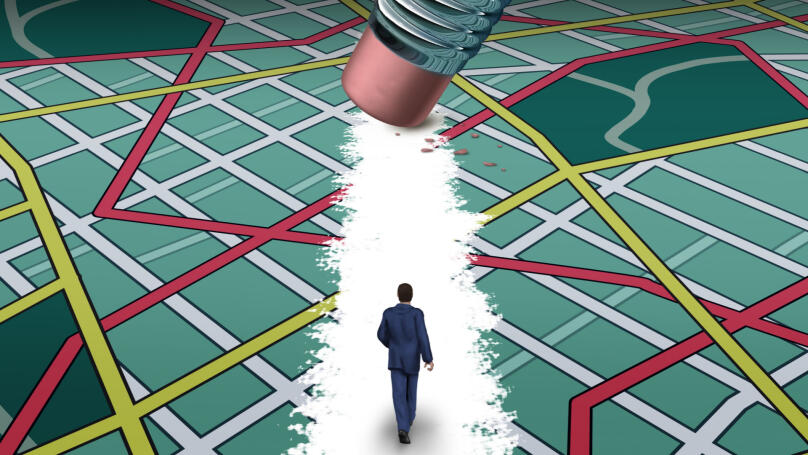Career Map

What is a career map?
A career map is a special tool for developing a detailed career plan. A career map visualises possible career changes and professional ambitions, such as the desired income level, cooperation with a particular company, a high position and other essential prospects for someone.
Career planning helps to assess one's capabilities and level of professional development objectively, competently prioritise and promptly achieve one's goals within the framework of one's needs, interests, and desires. It, in turn, facilitates professional fulfilment and optimises the career path. Additionally, the mapping process allows you to decide on your career direction and the required skill set.
A career map is an explicit algorithm for moving from one career point to another. A competent and timely map will tell you which skills you should develop to move to the next stage and how to avoid career stagnation. It is appropriate for career mapping for employees.
Even though each map gets developed by each employee individually and independently, the company management should also pay attention to the career roadmap of its employees. After all, a motivated and aware of their prospects and opportunities specialist works much more efficiently. Therefore, the manager can also draw up such a plan and thus, together with the employee, define their prospects and obligations within a particular organisation to achieve the desired position.
Types of career maps

Before you can start career mapping, you need to decide on the type of career map you want to use.
- A Traditional Vertical Career Map
A traditional vertical career mapping plan aims to move a specialist up one company's hierarchy. A vertical map includes steps that will help the employee move up the career ladder to a higher, more responsible position within the organisation where they are already safely employed.
- A Horizontal Career Map
The second type of career map involves a professional moving to a different industry or field of work without changing the level of their position and salary. A horizontal map will allow employees to expand their professional horizons and learn new skills needed for another, related to their expertise or a new area. It usually involves moving from one position to another with the same salary level but changing job tasks.
- A Broad Career Map
This type of map looks at different aspects of a career, including professional development, personal goals, life and personal perspectives, milestones, etc. Additionally, it helps to identify pinpoint strategies for development, such as choosing specific educational courses or other essential actions towards an intermediate goal. Also, this type of career map allows an employee to set up an individual work schedule and devote time to their interests and hobbies that are not directly related to work. Such maps achieve the necessary balance between work and personal life.
Also, a broad career map involves a cardinal change in the sphere of activity. For example, if a specialist worked in the marketing field and then transitioned and became a specialist in human resources management.
- An International Career Card
An international career map implies moving countries or going on frequent business trips, i.e., working in an international environment. Since this is a significant step and a crucial event for anyone, as even the most professional specialist, you must draw an international career map separately to help you stay on track.
The Components of a Career Map

A career itinerary consists of at least three key points:
- The starting point of the itinerary. This point means the person's current position in their career, competencies, and skills.
- The endpoint of the itinerary is what the individual wants to achieve and what skills and capabilities they wish to garner.
- Intermediate points of movement and career development on the way to the final goal. For instance, it is impossible to go from a salesperson to a branch manager simultaneously. To make the journey easier and track progress, you need milestones that specify the necessary tasks and actions, such as upgrading skills, acquiring new competencies, preparing for job interviews, etc.
It would be best to visualise your career conveniently on a map to reflect all these points and move sequentially from one stage to another. For visualisation, you can use career mapping software and various tools, such as online platforms and applications, to systematise data and build all kinds of graphs, charts, and diagrams. For example:
- MindMeister is a programme for creating and editing many types of maps, including process maps, career maps, mind maps and intelligence maps.
- Coggle is a free, simple, and easy-to-use app that allows you to create, correct and update various maps, charts, and diagrams to trace the connections between different areas of your business.
- Lucidchart is a business-focused platform that creates career maps, blockchain diagrams and other business charts.
- Creately is a dedicated tool for creating various diagrams, from flow and network to career and intelligence maps.
- SmartDraw also offers the creation and editing of career maps, charts, and any other type of graphic image.
How to create a career map

Before working directly in special career mapping programmes, you must go through several preparatory steps. So, the process of creating a career map includes the following:
Stage 1. Analysing the Current Career Situation
Stage One assesses specific aspects of a professional's career, such as achievements, acquired skills, experience, etc. With the help of such an analysis, it is possible to identify an employee's strengths and weaknesses, determine which aspects of work bring the most excellent satisfaction and efficiency and hinders development and career advancement.
For a competent analysis of the current career, it is best to answer the questions in writing:
- What position do I currently hold?
- Am I satisfied with it?
- What exactly am I dissatisfied with?
- What have I learnt from working in this company and in this position?
- How am I currently valuable to the company?
- Am I satisfied with my salary?
- Am I realising my full potential?
- What other responsibilities could I take on?
and so on.
Stage 2. Setting Goals
You should also identify your main career goals to improve your job performance and increase your chances of promotion and success. Think about what kind of career you would like and what steps you need to take to get there. Objectively assess your skills and capabilities, interests, wants, and needs.
Stage 3. Identifying Competencies and Looking for Opportunities to Achieve Your Goals
You need to consider all the opportunities that can help you build your desired career precisely as you envision it. Research the labour market, available jobs, employer requirements and conditions to do this. Also, consider career options within your current company.
Moreover, to identify the skills you need to achieve each goal, you may have to take refresher courses or get additional education. However, developing professional competencies, personal qualities, and soft skills is necessary.
Then you can move on to the steps involving a direct career growth plan.
Stage 4. Drawing up a Development Plan
At this stage, you need to create a concrete plan of action to achieve your goals. Determine how you will acquire the necessary skills and knowledge and what steps you need to take to realise your objective.
Try to develop a longer-term action plan that includes long-term and short-term, intermediate goals and actions. For example, detail exactly how you can get a higher position. It may involve attending conferences, taking on new tasks and taking initiative in new projects.
Stage 5. Evaluating Progress and Interim Goals Achieved
Once the work on the plan drawn up in the previous step has begun and is actively getting pursued, you can evaluate interim results. Generally, assessing progress should demonstrate how close you have reached the main goal and adjust the plan according to the situation.
To evaluate your achievements, describe in detail what steps you have already taken, what results they have brought, how successful they have been, and how this affects your career. In addition to evaluating your progress, remember to supplement the plan with the actions necessary for further advancement each time.
Stage 6. Developing and Following the Plan Further
It is vital to remember that the career map requires constant improvement, additions and adjustments depending on the results achieved and external circumstances. Be sure to react to all changes in the business environment and directly within the company because it enables you to stay in touch with reality and remain competitive.
Thus, a career map is a relatively simple but effective tool that stimulates rapid career development and promotes self-development. Additionally, career maps are universal. Students can use them to plan further employment, as well as newcomers to a company, freelancers, and owners of successful businesses. With their help, you can assess your strengths, unlock your potential, increase your competitiveness, and set new goals!























